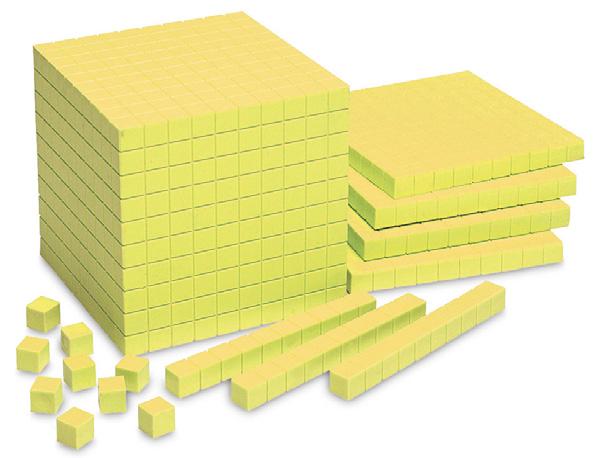Diagnostic questions
- Show the student a three-digit number and ask them which digit is in the tens place.
- a. Ask the student to write down three hundred and seven.
b. If the student writes 307, ask them why they used a zero. If the student cannot write 307, flip the paper, write 307, and read out the number.
c. Ask the student to model 307 using place value equipment. - Ask the student what place value means.
What to notice in the student’s response
Can the student correctly identify which digit is in the tens place?
Can the student record a number that includes a 0?
Can the student identify the role of a place holder?
Can the student model a number using place value equipment?
Does the student understand the meaning of place value?
Deliberate acts of teaching
Materials
- Make a 1000 (Number and Algebra, level 2)
Concrete materials are useful for representing mathematical ideas. However, their effectiveness relies on the student making a connection between the materials and their own mathematical ideas about number.
Using place value equipment, model one, ten, and one hundred. Discuss the relative value of each piece of equipment.
Ask the student to use place value equipment to show you:
- 2 hundreds, 3 tens, and 4 ones
- 1 hundred and 5 ones
- 1 ten and 7 ones.
Ask the student to write the numbers down.
Explain the connection between place and value, that is, the place that a digit is in tells us how many hundreds, tens, or ones there are. Talk about the role of zero as a place holder.
Write out a range of numbers and ask the student to model them using place value equipment.
Discuss how, in English, we say twenty rather than 2 tens, and fourteen rather than 1 ten and 1 four, but that this is not the same in all languages, for example, in te reo Māori, 25 is rua tekau mā rima (two tens and five).
- Dictate a list of numbers to the student and ask them to write them down. Use models to make any numbers that the student can’t write down.
- Dictate five numbers. Ask the student to record each number on memo paper and then to place the numbers in order of size, making a model of each number if necessary.
What to do next if the student is stuck
Give the student place value equipment and read out several numbers in terms of their value. For example, for 208, ask the student to select 2 hundreds and then 8 ones. Emphasise the link between the way the number is written and the way it can be modelled. Encourage the student to read out numbers in terms of their value, for example, 315 can be read as 3 hundreds, 1 ten, and 5 ones.
Initiating home-based activities
Ask parents to help the student to identify numbers in their environment (spoken or written). Parents can ask the student how many hundreds, tens, or ones there are in each number.
Next teaching steps back in the classroom
Provide the student with access to place value equipment to use when working on problems involving addition and subtraction.
Digital Learning Objects can be used in class for independent practice.
